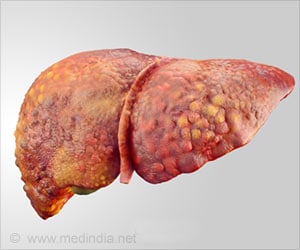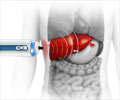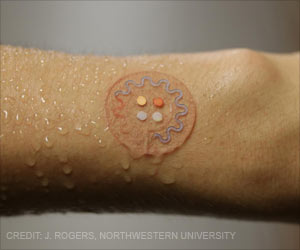Understanding the role of the CPEB4 protein in the liver could contribute to the development of treatments that boost the clean-up process.

- After a high-fat diet, a stress response is usually triggered in the liver.
- Under this circumstance, the endoplasmic reticulum stops its activity in order to re-establish cell equilibrium.
- In the absence of protein CPEB4, the endoplasmic reticulum is unable to activate the stress response.
Non-alcoholic steatohepatitis (NASH) is a type of non-alcoholic fatty liver disease (NAFLD) that generally leads to chronic inflammation. It is characterized by accumulation of fat deposits in the liver cells or hepatocytes and also the damage of these cells.
Nonalcoholic fatty liver disease (NAFLD) and nonalcoholic steatohepatitis (NASH) cause few or no symptoms.
It can lead to a host of other conditions including fibrosis, cirrhosis and ultimately liver cancer.
The incidence of liver cancer has more than tripled since 1980 and is the primary cause of death in patients with cirrhosis.
Factors like obesity and lifestyle, aging and type 2 diabetes are associated with an increase in the incidence of this disease.
With the rising obesity epidemic in the US and worldwide, there will be an increase in those affected by non-alcoholic fatty liver disease in the coming decades.
Therefore, a fundamental understanding of this medical problem is therefore essential for development of novel treatment strategies.
CPEB4
In order to study the function of the CPEB4 protein, the scientists at Institute for Research in Biomedicine (IRB) Barcelona depleted the expression CPEB4 in mouse livers.
They observed that the mice developed fatty liver as they aged. Young mice with depleted CPEB4, which were fed a high-fat diet also developed this condition in a more pronounced manner.
Carlos Maíllo, first author of the article and PhD student at IRB Barcelona, has described the molecular function of CPEB4. Maíllo states that this protein is essential to drive the liver stress response. A stress response may be triggered by uncontrolled ingestion of fat.
Under this circumstance in order to re-establish cell equilibrium, the endoplasmic reticulum stops its activity.
Endoplasmic reticulum is a cell organelle associated with protein synthesis and folding and lipid metabolism.
This "clean-up" mechanism is mediated by CPEB4.
Its function varies with the time of day, being more active in humans during the day and becomes less active at night.
The endoplasmic reticulum is unable to activate the stress response without the protein CPEB4. This leads to the accumulation of lipids in the liver cells or hepatocytes.
Possible New Treatment
The researchers have managed to reverse fatty liver disease in mice by treatment with a drug called Tudca, which is currently used for other disorders.
This drug exerts the same function as the proteins that are activated by CPEB4 gene and that are responsible for cleaning up the cell.
Raúl Méndez, ICREA researcher at IRB Barcelona and co-leader of the study, explains that "knowledge of the hepatic function of CPEB4 could be useful as a predictive marker for those people with variants of this protein, thus serving to prevent this condition, for example, through improvements in diet and better choice of eating times. Such knowledge could also contribute to the development of treatments that boost the clean-up process".
"This basic research study does not have a direct and immediate clinical application, but it lays down the foundation for the applied science that follows," says Mercedes Fernández, co-leader of the study and head of the group at IDIBAPS and the Biomedical Research Networking Center of Hepatic and Digestive Diseases (CIBEREHD).
The results appear in Nature Cell Biology.
References
- Nonalcoholic Fatty Liver Disease (NAFLD) & Nonalcoholic Steatohepatitis (NASH) - (https://www.niddk.nih.gov/health-information/liver-disease/nafld-nash)
- Carlos Maíllo et al. Circadian- and UPR-dependent control of CPEB4 mediates a translational response to counteract hepatic steatosis under ER stress. Nature Cell Biology ; (2017) DOI: 10.1038/ncb3461
Source-Medindia














